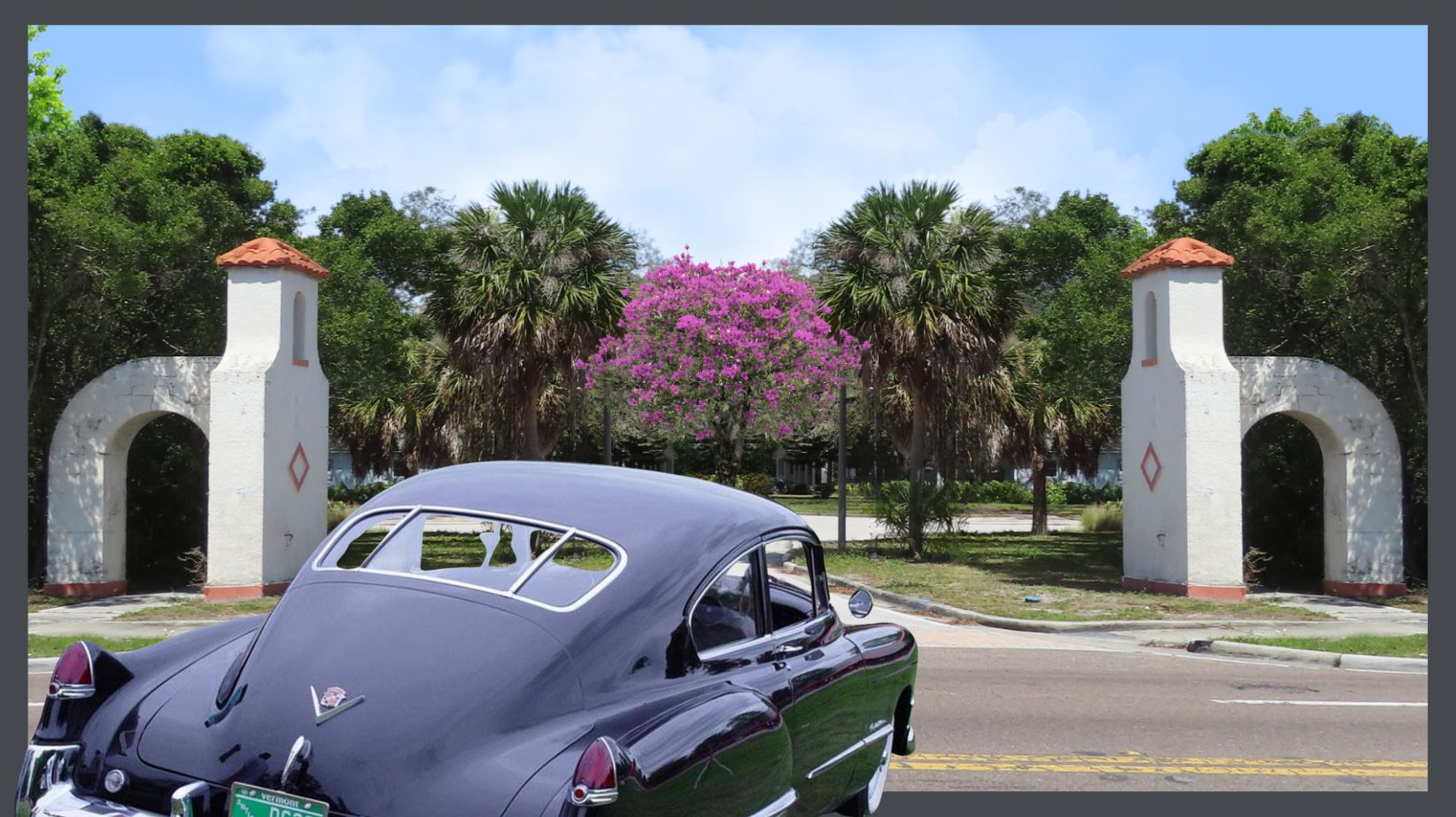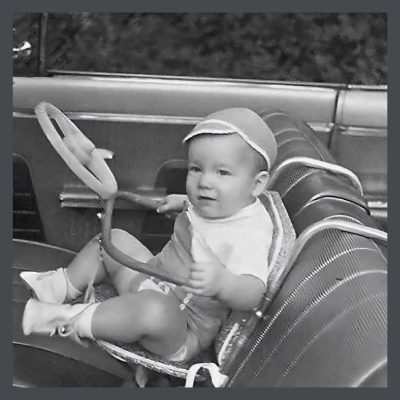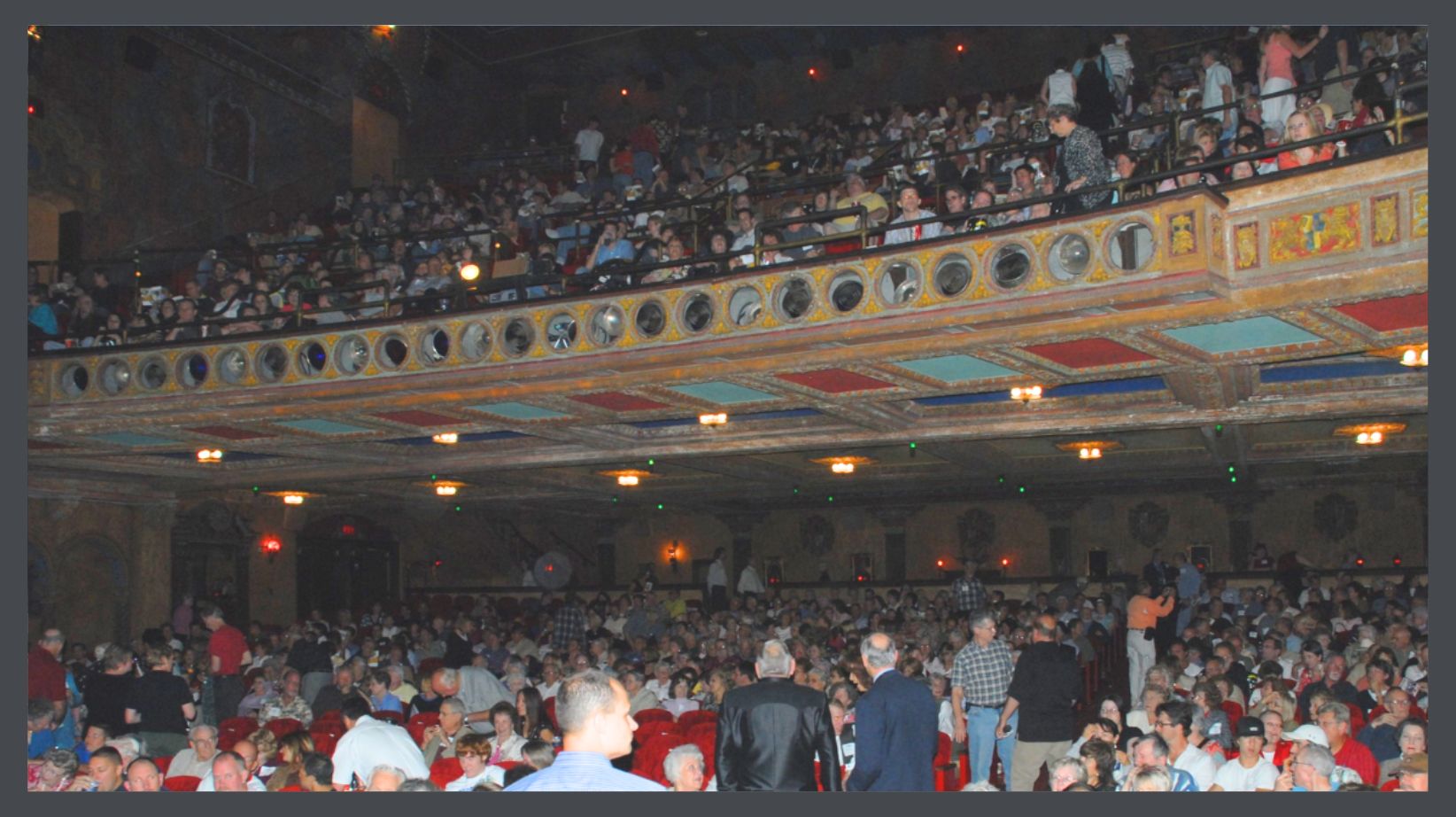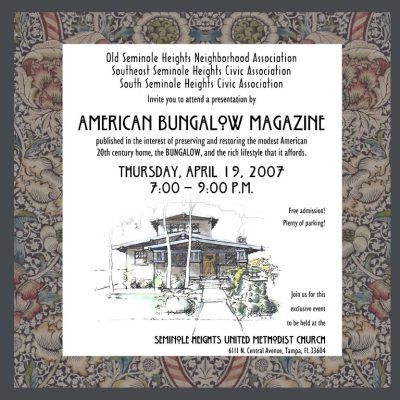“There may have been a time when preservation was about saving an old building here & there, but those days are gone. Preservation is in the business of saving communities & the values they embody.”
~Richard Moe, President, National Trust for Historic Preservation
1993-2009
 I have had the honor of leading two neighborhood historic preservation committees in two different states. Moving away from these neighborhoods, I was dismayed that nobody had taken over running the committees’ activities. Foolishly, I had made the mistake of thinking that everyone knew how to chair a preservation committee, ignoring the fact that I had had incredible mentors who had guided me. From my mother teaching me about history & architecture, to the PhD archeologist who took me under his wing when I arrived in Tampa, still traumatized from the loss of the Shopping Bag Building, to the late, great Jane Powell, they taught me how to effectively DO SOMETHING ABOUT IT!!!
I have had the honor of leading two neighborhood historic preservation committees in two different states. Moving away from these neighborhoods, I was dismayed that nobody had taken over running the committees’ activities. Foolishly, I had made the mistake of thinking that everyone knew how to chair a preservation committee, ignoring the fact that I had had incredible mentors who had guided me. From my mother teaching me about history & architecture, to the PhD archeologist who took me under his wing when I arrived in Tampa, still traumatized from the loss of the Shopping Bag Building, to the late, great Jane Powell, they taught me how to effectively DO SOMETHING ABOUT IT!!!
In these posts on neighborhood preservation activism, I am going to download my head of all my study, all my experience, my wins, my losses, all the wisdom gifted to me by my much beloved mentors. (Sadly, many of them now gone.) Hopefully I can do this in a way that you young ‘uns will find amusing, enlightening & inspiring. Maybe useful too! I am going to speak to you at my own level of education when I decided I had shed enough tears over the destruction of old buildings, & was lucky enough to meet Jane. That story is here. (It’s just a moment of nostalgia.)
THE IMPORTANCE OF NEIGHBORHOOD HISTORIC PRESERVATION
Every neighborhood has a unique story, the social, financial & technological evolution of the people who lived there. These stories are expressed in the built environment- the houses, the businesses, the churches. You can walk down the street & be in touch with the history of the place you live. It gives my heart joy!

I came to neighborhood activism through my passion for saving our built heritage, so recently, when we discovered that the City was planning to demolish the stucco entry gates leading to our Post WWII neighborhood, due to structural safety concerns, I knew what to do.
First, it was necessary to discover the level of interest shared by the residents, so a our small, hastily assembled team performed a door-to-door survey. We were amazed at the passion that we encountered, the fists raised!
 Many people have long histories with the neighborhood. Three of them, in their late 70’s, had grown up here, had been childhood friends. Their moms were great chums, chatting every day on the phone, over coffee & cigarettes (I’m sure!) The arches had been a landmark for them for decades- as tired little ones sagging in their aluminum frame car seats coming home after a too long day of errands with Mom; as kids on their bikes, venturing out into the big, wide world without their parents for the first time & later, as teens, directing their dates on where to turn to pick them up to escort them to the prom.
Many people have long histories with the neighborhood. Three of them, in their late 70’s, had grown up here, had been childhood friends. Their moms were great chums, chatting every day on the phone, over coffee & cigarettes (I’m sure!) The arches had been a landmark for them for decades- as tired little ones sagging in their aluminum frame car seats coming home after a too long day of errands with Mom; as kids on their bikes, venturing out into the big, wide world without their parents for the first time & later, as teens, directing their dates on where to turn to pick them up to escort them to the prom.
Surprisingly, many of most vocal are more newly arrived, myself included, & had been drawn to buying in the neighborhood by the entry arches. These lovely structures identify. They invite. They welcome. They symbolize home.
It was easy to rally this passion in a campaign to SAVE THE ARCHES & though it took much hard work, we quickly raised the funds to qualify to apply for a matching grant from the City to restore them, thereby ensuring their soundness. (Still awaiting final word, but we are hopeful!) Impressed by the neighborhood response, the threat of the wrecking ball evaporated, & this symbol of our small subdivision would be made safe & sound, preserved for the next generation.
The most wonderful part about having this common purpose, is the neighborhood spirit that has been generated. We had a yard sale to which at least 25% of the families donated. The sale itself was quite the party! Neighbors introduced themselves to neighbors & to this Boomer girl who grew up in a tightly knit, 1950’s Phoenix suburb much like this one, it felt warmly familiar.

Earlier, I had produced for my neighborhood association, a historic preservation documentary film about the establishment of a our 1920’s, bungalow neighborhood. The premier at a 1920’s, downtown extravaganza theatre was attended by 1,500 people. (Actually, it was more like 1,800. The fire department made us turn away about 300.) All the residents, both past & present, were so excited & for at least one elderly, wheelchair bound woman, it was the first time venturing out for years. I reserved special seating for all the people who had lived in the neighborhood before WWII. Theirs was a touching & festive reunion. It was the most wonderful & rewarding experience of my entire life.
SO WHAT DOES A NEIGHBORHOOD PRESERVATION COMMITTEE DO?
 Its basic purposes are to:
Its basic purposes are to:
• Educate stakeholders on the importance of preserving the cultural heritage of the neighborhood. This includes the many, strong, economic benefits.
• Teach them about the architectural history of their houses & how to restore & maintain them, as well as their commercial & religious buildings.
• Collect, organize & maintain data on the social & cultural history of the neighborhood & its individual structures.
• Provide great fellowship for those passionate about preservation, & give them a platform from which to communicate their passion & knowledge to others.
In the long run, a preservation historic committee allows a group of people who might hail from any & all parts of the globe, to share a common history which helps build community pride. This results in a more beautiful, safer, friendlier, happier, better maintained neighborhood, & incidentally, it can raise a neighborhood’s profile, resulting in higher home values. Bottom line- people love their shared neighborhood history. It binds them.
GET MORE INFORMATION ABOUT NEIGHBORHOOD HISTORIC PRESERVATION COMMITTEES
PRESERVATION ACTIVISM IN YOUR BUNGALOW NEIGHBORHOOD![]()
NEIGHBORHOOD PRESERVATION COMMITTEE MEMBERSHIP ACTIVITIES![]()
PUBLIC EVENTS THAT CAN BE PRODUCED BY YOUR NEIGHBORHOOD PRESERVATION COMMITTEE![]()
MAKING YOUR NEIGHBORHOOD HISTORIC PRESERVATION COMMITTEE WELL KNOWN![]()
AGENDA FOR YOUR FIRST NEIGHBORHOOD PRESERVATION COMMITTEE MEETING![]()
BASIC HISTORIC PRESERVATION GLOSSARY OF TERMS![]()
WHAT IS A HISTORIC DESIGNATION, ANYWAY?![]()
The Florida Trust for Historic Preservation offers a comprehensive guide to historic preservation, appropriate for the novice as well as the more educated. I recommend that you check it out.
STAY IN THE BUNGALOW KNOW!!!
Sign up for our newsletter & receive our FREE E-book, 7 VITAL Things to Do Before You Hire a Contractor.




Thanks for all your inspiring work, and in particular for the Richard Moe quote you’ve put at the beginning of this article. I believe that historic preservation is most effective and beautiful when it’s community-based (and has shed completely its occasional aura of elitism).
Thank you. It has always guided me & I hope that it would guide others.
I am so happy that you are inspired by it!
Yes, that quote has been the driving force behind all my work. And, yes, the elitism is a great barrier to preservation. Our culture belongs to all of us.
Oops! I thought I had replied earlier & couldn’t find it. Of course the second I post a second one, the first pops up!